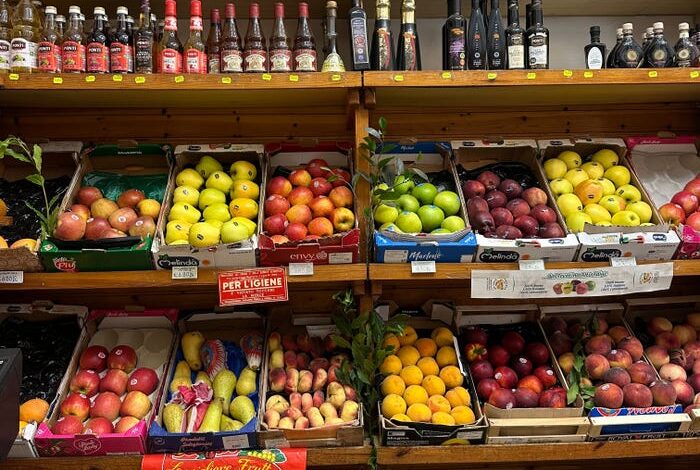Grocery Shopping in Italy: 6 Surprising Insights Revealed Now

UPDATE: An American’s experience grocery shopping in Italy reveals startling cultural differences that could change how you view your next shopping trip. Jenna Curcio, who lived in Rome in 2022, shares six surprising insights that highlight a more personal, community-oriented approach to grocery shopping that contrasts sharply with American habits.
Just announced: Grocery shopping in Italy is not just a chore; it’s a vibrant part of daily life. Curcio discovered that Italians tend to shop for groceries more frequently, opting for fresh ingredients rather than bulk purchases. This approach ensures a constant supply of quality produce and meats, with shoppers often visiting multiple stores for the best selections.
Curcio recalls her visits to Mercato Trionfale, where she would select fresh fruits and local cheeses. “It was less about convenience and more about quality,” she explains. In stark contrast, Americans often rely on large supermarkets or delivery services for their grocery needs.
Another eye-opening revelation: Italians typically shop for only a few days’ worth of groceries at a time. This habit not only promotes fresher meals but also creates a rhythm of regular visits to local markets, fostering community interactions. “I liked that this way of shopping meant having fresher ingredients on hand more regularly,” Curcio noted.
The scale of stores also caught her attention. In cities like Rome and Milan, grocery stores are generally smaller and more intimate than the sprawling supermarkets found across the US. “Seeing familiar faces became part of my routine,” she said, transforming grocery shopping into a social experience rather than a mundane task.
One of the most shocking differences was the storage of staple items. In Italy, eggs and milk can often be found on regular shelves, rather than in refrigerated sections. This is due to different sanitization and pasteurization processes that make these products safe to store at room temperature, a practice not common in the US.
Moreover, some grocery stores in Italy warmly welcome dogs, complete with specialized carts for furry friends. Curcio recounts a moment in a Roman store where a terrier sat comfortably in a cart, a sight that would be rare in American supermarkets, where pets are generally prohibited.
Curcio’s experience in Italy reshaped her perspective on grocery shopping. “It taught me that grocery shopping doesn’t have to be a rushed, utilitarian task. It can be social, intentional, and even joyful,” she reflected.
As she returns to the US, Curcio aims to incorporate this Italian approach into her routine, even if it means adjusting to the absence of her dog riding alongside her in the cart.
This fresh perspective on grocery shopping not only sheds light on cultural differences but also invites a rethinking of how we engage with our local markets and communities. As grocery shopping continues to evolve, these insights from Italy could inspire a more enriching and enjoyable shopping experience for all.
For those curious about the nuances of grocery shopping abroad, Curcio’s observations provide a compelling look at how a simple chore can reflect deeper cultural values.






